Japanese Beetle
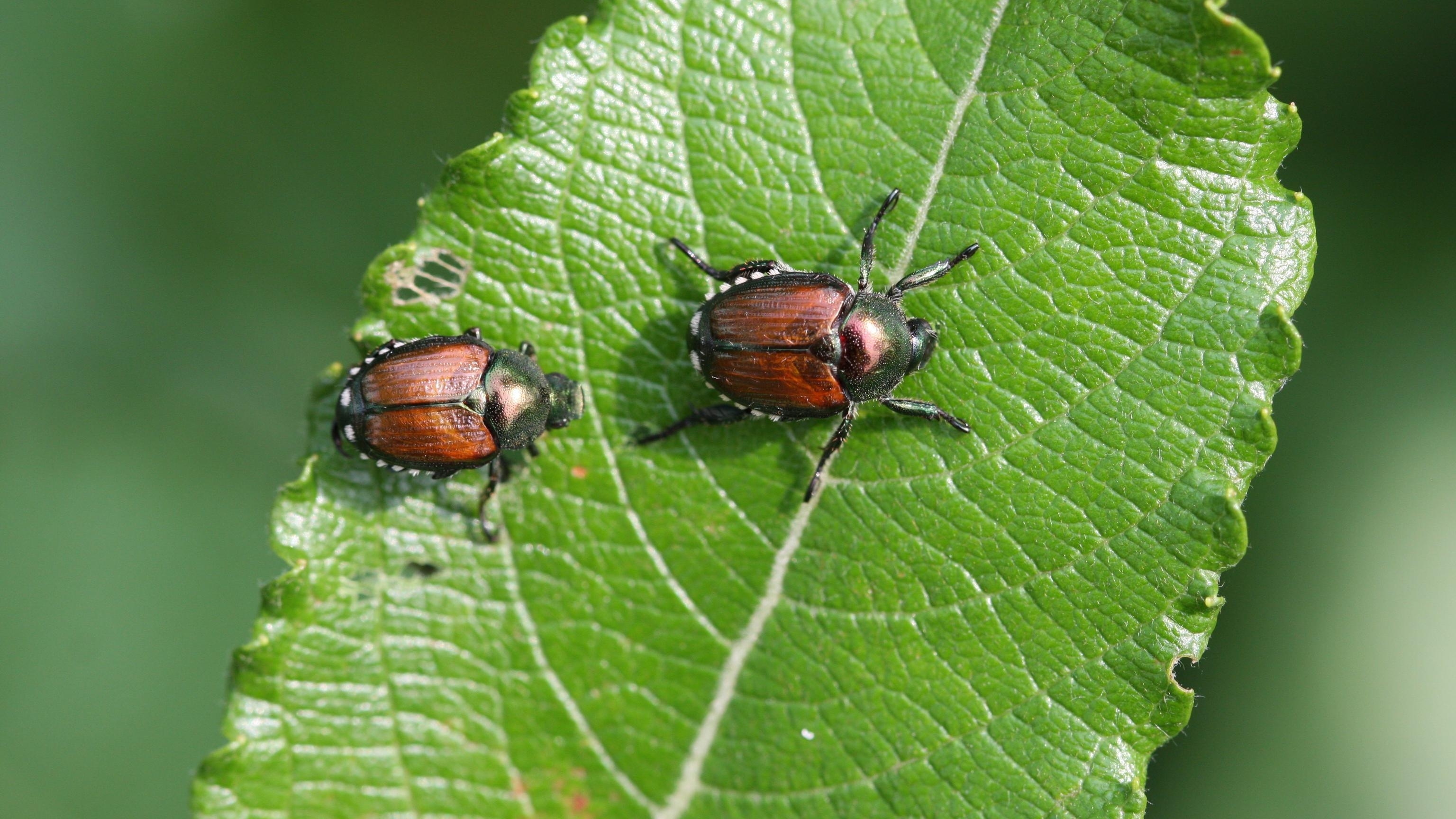
Steven Katovich, Bugwood.org
The Japanese beetle (Popillia japonica) is a destructive turf, grass, and plant pest. Beneath the soil, growing grubs gnaw on grass roots causing turf to brown and die. Adult beetles feed on more than 300 ornamental and agricultural plants. They chew large, irregular holes between leaf veins, which makes the leaves resemble a piece of lace. Japanese beetles spread naturally or when people unknowingly move infested plants, sod, or soil.
This beetle, native to Japan, was first discovered in the United States in New Jersey in 1916. Since then, the beetle has spread throughout most of the Eastern and Central United States. It also infests certain areas and portions of States west of the Mississippi River.
APHIS regulates the movement of air cargo to keep hitchhiking adult beetles from reaching Western States.
The Japanese beetle can be very difficult and expensive to control. Here's what to look for:
- Appearance
- Adult beetles have shiny, metallic-green bodies with bronze-colored outer wings. They have six small tufts of white hair along the sides and back of their bodies, right under the edges of their wings. They're a little less than half an inch long. The males are usually slightly smaller than the females. Japanese beetles have one generation a year.
- Biology
- During their feeding periods, about 4 to 6 weeks, females intermittently leave plants, burrow about 3 inches into the ground to lay their eggs, and then return to feed again. This cycle is repeated until the female lays 40 to 60 eggs. By midsummer, the eggs hatch, and the young grubs (larval stage) begin to feed. When fully grown, each grub is about an inch long and lies in a curled position.
- Life cycle
- In late autumn, grubs burrow 4 to 8 inches deeper and remain inactive all winter. Then in early spring, they crawl through the soil and feed on tender turf roots. Late spring, grubs change into pupae. About 2 weeks later, the pupae become adult beetles and emerge from the ground. You're most likely to see the adults from late spring through midsummer.
- Damage
- Look for well-maintained turf grasses with damaged brown patches, especially in middle or late August. Female beetles are attracted to these areas to lay their eggs.
View photos of Japanese beetle and its lifecycle:
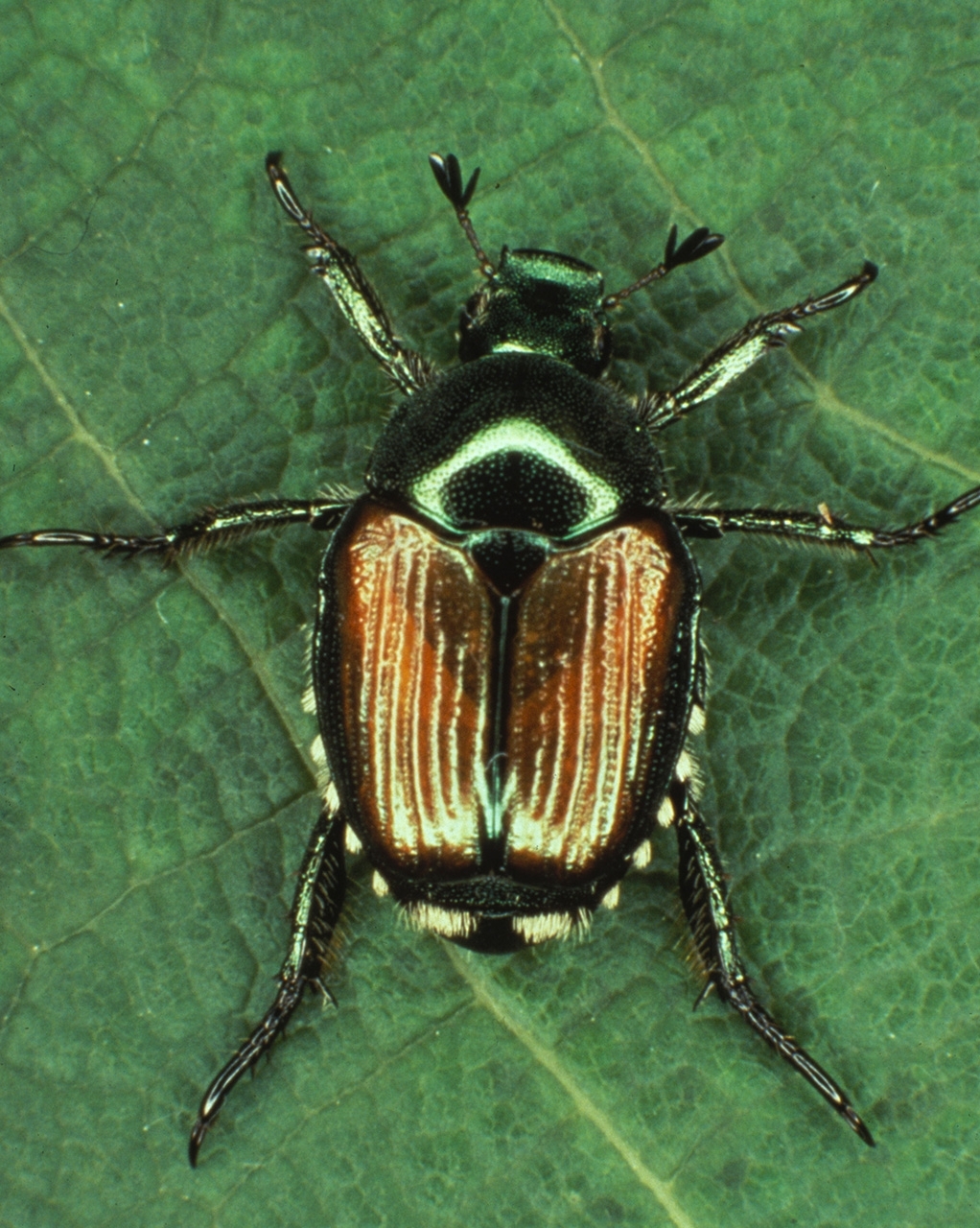
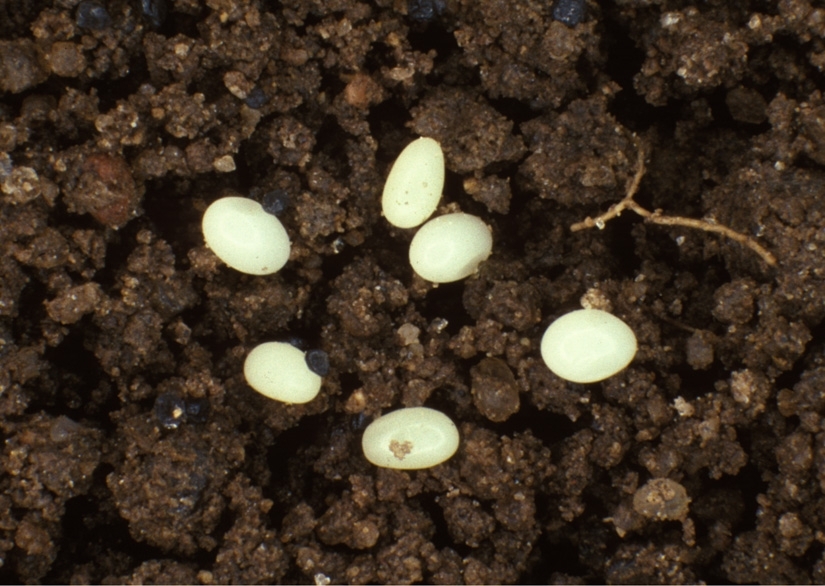
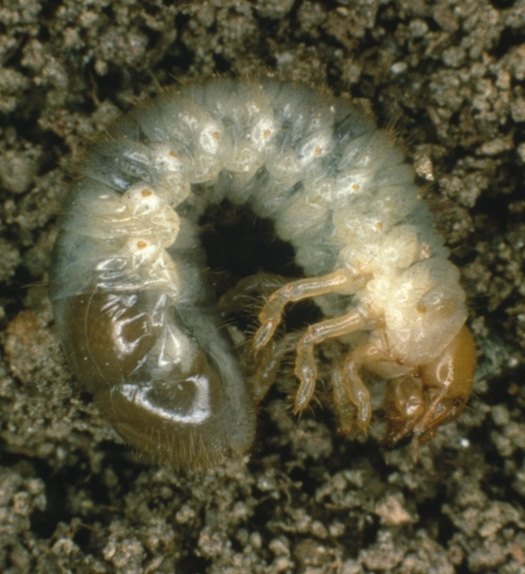
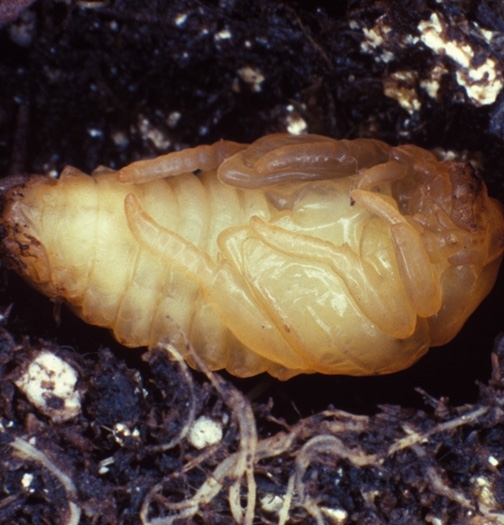
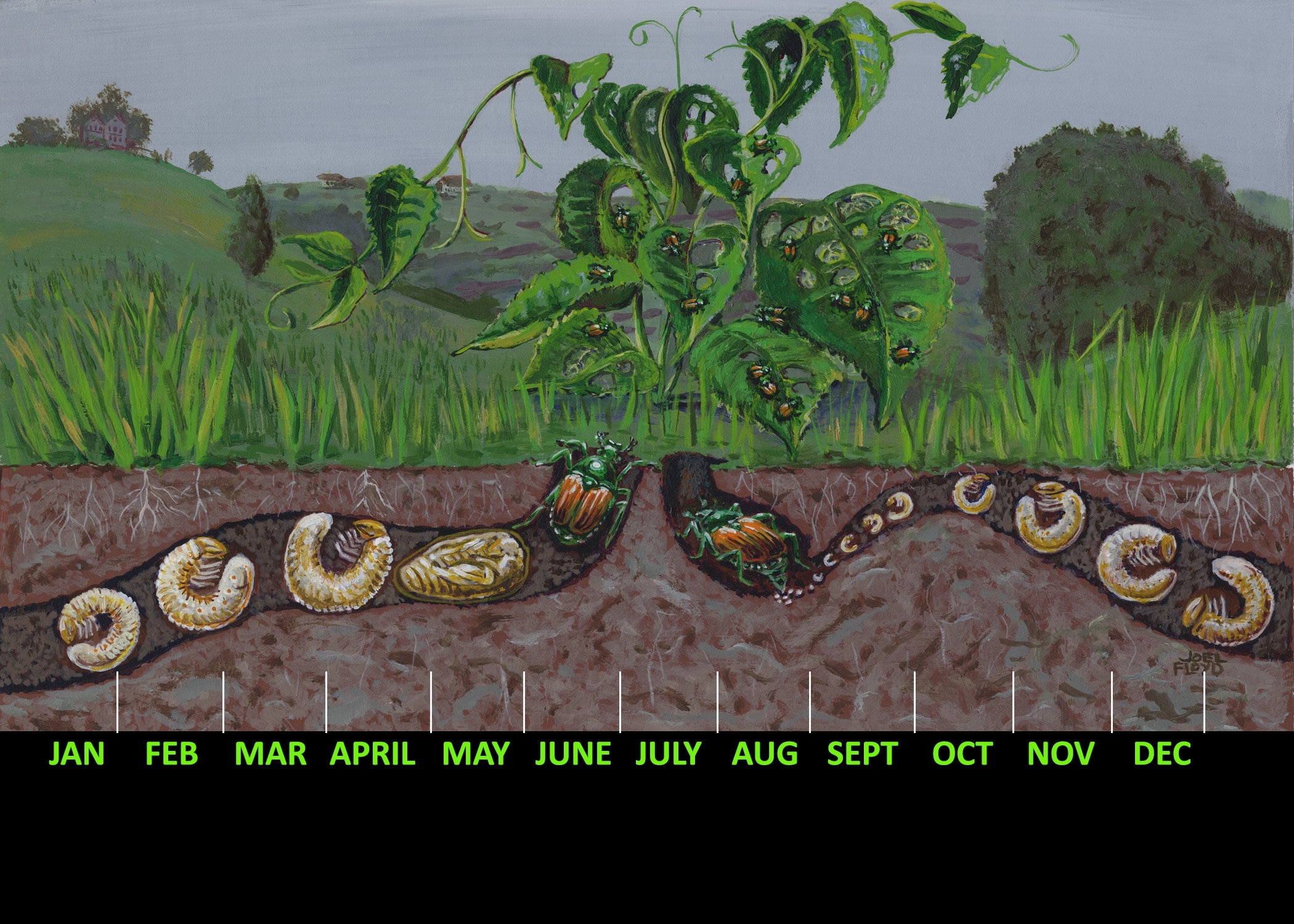
The Japanese beetle is a scarab beetle species that is native to Japan.
A typical cluster of Japanese beetle eggs. Eggs are oblong, about 1/16 inches long, and pearly white.
Japanese beetle larva (also call a grub) develops in soil and feeds on the roots of various plants and grasses.
This Japanese beetle pupae will become an adult beetle in about 2 weeks and emerge from the ground.
The Japanese beetle lifecycle (Illustration by APHIS employee Joel Floyd).
- Keep your trees and plants healthy; diseased and poorly nourished trees and plants are susceptible to beetle attacks.
- Plant beetle-resistant trees and plants. See host lists for plants resistant and susceptible to adult Japanese beetle.
- Purchase plants from treated, reputable locations.
Homeowners can control beetles and exert minimal impact on the environment by combining chemical, biological, and cultural strategies.
Chemical Control
Pesticides are toxic, and it is important to follow label directions exactly. When used improperly, insecticides can pose serious hazards to people and wildlife. A variety of chemical controls for adult beetles and grubs are available from retail outlets. You can also contact your county cooperative extension about chemical control options for Japanese beetle populations in your area.
Biological Control
The Japanese beetle has natural enemies (biological control agents) that can be used to control their populations. Although these biological control agents take a little longer to produce the same results as insecticides, they are not harmful to people and wildlife, and they last longer in the environment.
Cultural Control
Two other environment-friendly options that help control Japanese beetle populations include:
- Planting resistant plants, like red maple, boxwood, hosta, or begonia
- Setting pheromone traps in your landscape
Please consult with your local county or State cooperative extension agent/service for more detailed information on controlling Japanese beetles in your area.
Report Plant Pests and Diseases
Have you seen this pest or signs of pest damage? Immediately report your findings.
Find your State plant regulatory official
Find your State plant health director
APHIS maintains the Japanese Beetle Quarantine and Regulations to protect agriculture and prevent the human-assisted spread of this pest. The Federal quarantine is designed to reduce artificial spread of Japanese beetles by aircraft.
The following plant lists do not document all of the species that are susceptible or resistant to Japanese beetle attack. For more information, consult your local county extension personnel.
We regulate airports located in States quarantined for Japanese beetle to keep the beetles from hitchhiking on air cargo and spreading to new areas.
We also work with State departments of agriculture and other cooperators to protect uninfested States and support agricultural commerce across the country.
- U.S. Domestic Japanese Beetle Harmonization Plan (National Plant Board)
Assessment of Biocontrol Possibilities for Japanese Beetle (475.33 KB) (September 2020)






